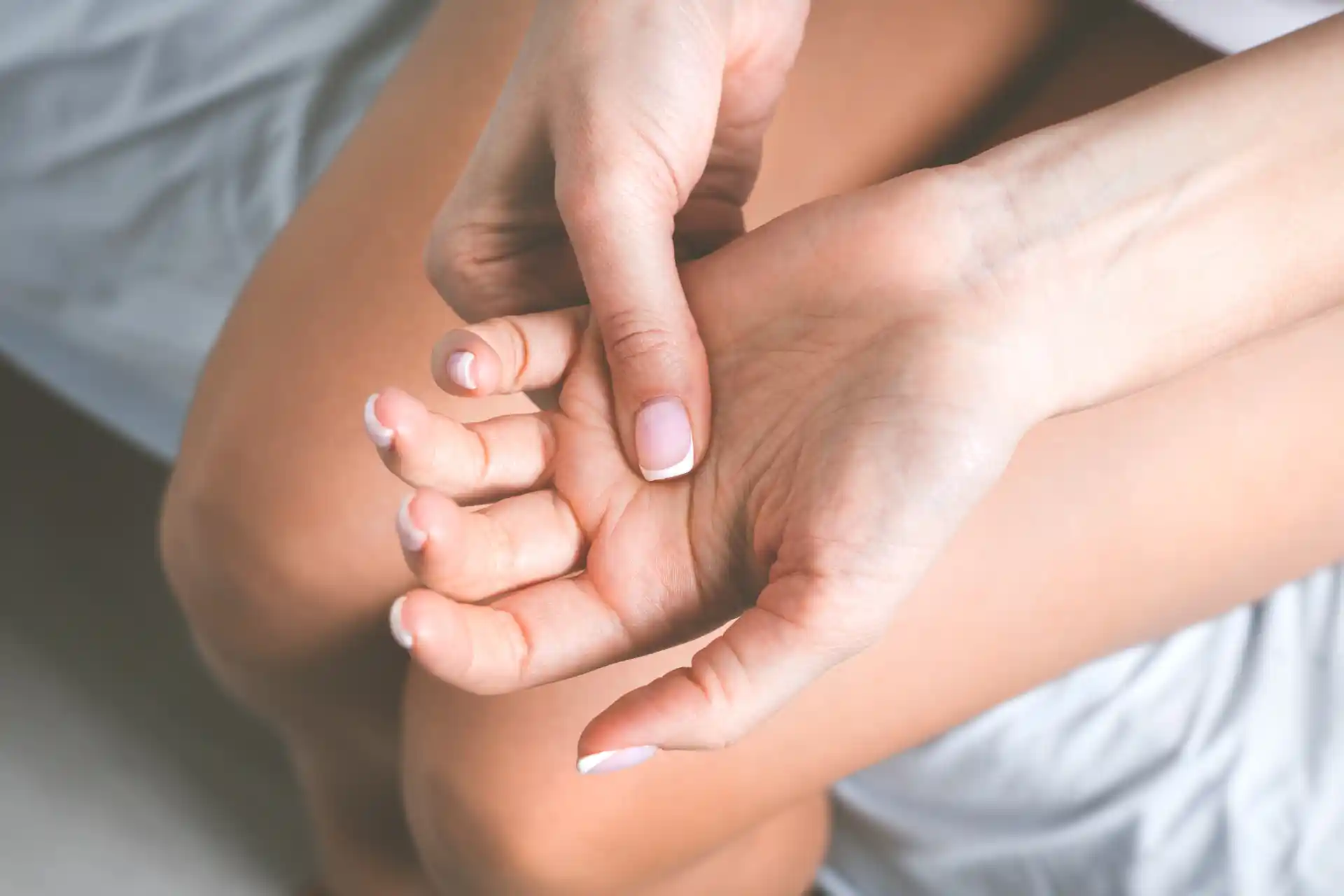Understanding Hyperelastic Skin
As part of your journey to comprehend Ehlers-Danlos syndrome (EDS) and its associated symptoms, it's crucial to grasp the concept of hyperelastic or 'stretchy skin'. This condition is characterized by skin that extends beyond its normal limit, which is primarily caused by genetic diseases such as EDS and Marfan’s syndrome.
Causes of Hyperelastic Skin
Hyperelasticity occurs when there's a problem with how your body produces collagen or elastin fibers. These proteins constitute a significant portion of your body's tissue. In the context of EDS, a genetic condition that affect your connective tissue, patients experiences issues that lead to excessive stretching of your skin and joints.
Apart from EDS, other rare genetic disorders can also result in hyperelastic skin.
- Marfan syndrome: Affects connective tissues due to a mutation in the fibrillin-1 gene, leading to stretchy skin.
- Osteogenesis imperfecta: Characterized by easily breakable bones due to a collagen disorder and is usually accompanied by stretchy skin.
- Pseudoxanthoma elasticum (PXE): A progressive disorder where the accumulation of minerals in elastic fibers damages connective tissue, resulting in stretchy skin.
Hyperelastic Skin in Ehlers-Danlos Syndrome
Individuals with hyperelastic skin need to take special measures to avoid skin damage. As their skin is more delicate than normal, they are more likely to get cuts and scrapes, with scars that may stretch and become more visible.
If you have EDS, your skin might stretch more than is typical, and your joints might be unusually flexible. If you're interested in a comprehensive list of symptoms for Ehlers-Danlos Syndrome, please take a look at our detailed article on Ehlers-Danlos syndrome symptoms.
In summary, hyperelastic or stretchy skin is a key characteristic of several genetic disorders, including Ehlers-Danlos syndrome. It's crucial to understand the causes and symptoms of this condition to manage it effectively. If you're seeking more information on EDS, please explore our other articles on EDS subtypes, medications to avoid with EDS, and EDS treatments.
Other Skin Abnormalities Related to Ehlers-Danlos Syndrome
- Soft skin: The skin has a soft, velvety texture, usually present in the forearms, although the changes can be present at any site.
- Skin fragility: Affected children fall more easily due to poor joint and muscle control associated with joint laxity. Small atrophic (thinned) scars may follow trauma at sites such as the forehead, chin, elbows, knees and shins.
- Easy bruising: Easy bruising, at sites of trauma, accompanies most forms of EDS including hEDS. This occurs due to an increased fragility of dermal blood capillaries and poor structural integrity of the skin rather than a clotting abnormality.
- Rashes: This uncommon rash characteristically forms in a circular pattern with raised rough edges and a clear centre. It is usually sited over the neck and flexures. It is more common in vEDS but may occur in hEDS as well as other connective tissue conditions.
- Piezogenic papules: These small (less than 1cm) and soft skin-coloured lumps appear on the sides of the heel when standing and disappear when the foot is elevated. Although usually symptomless they can occasionally be painful.
Managing Skin Issues in Ehlers-Danlos Syndrome
Skin symptoms of EDS can be managed effectively through a variety of approaches:
Gentle Skincare Routine
People with Ehlers-Danlos Syndrome often have delicate and sensitive skin. Therefore, it's crucial to adopt a gentle skincare regimen. When bathing, it's recommended to use lukewarm water instead of hot water as the latter can strip the skin of its natural oils, leading to dryness and irritation.
Avoid harsh soaps or detergents that can damage your skin. Opt for gentle, fragrance-free cleansers that won't cause irritation. Pat your skin dry with a soft towel instead of rubbing, and apply moisturizer while your skin is still damp to lock in hydration.
When it comes to shaving, use a sharp razor and shave in the direction of hair growth to reduce the risk of nicks and cuts. It's also important to protect your skin from sun exposure by wearing protective clothing and using sunscreen.
Moisturizing and Hydration Techniques
Keeping your skin moisturized is a vital part of managing Ehlers-Danlos Syndrome skin rash. Dry skin can exacerbate itchiness and discomfort, so it's essential to hydrate your skin frequently.
- Moisturize your skin: Use a face and body moisturizer at at least once a day, preferably after bathing when your skin is still damp. This helps to seal in the moisture and keep your skin hydrated throughout the day.
- Use non-irritating products: Look for moisturizers that are hypoallergenic and free from irritating ingredients.
- Drink sufficient liquids: Drinking plenty of water helps to hydrate your skin from within. Aim for at least eight glasses of water a day, and incorporate hydrating foods like fruits and vegetables into your diet.
These skincare tips, along with the right treatment approach, can help manage the skin symptoms of Ehlers-Danlos Syndrome. It's always a good idea to consult with a healthcare professional or a dermatologist to create a skincare routine that is tailored to your specific needs.
Consulting with a Dermatologist
A dermatologist, a doctor specializing in skin conditions, can play a vital role in managing the skin complications associated with Ehlers-Danlos Syndrome. They can help diagnose the skin rash associated with the syndrome and provide targeted treatments to alleviate the symptoms.
Given their expertise, dermatologists can also provide invaluable advice on managing the skin's condition, such as suggesting suitable skincare products that won't irritate the skin. They can also recommend various techniques to reduce the symptoms of the rash.




.jpg)

.svg)